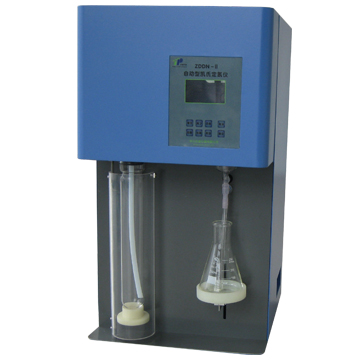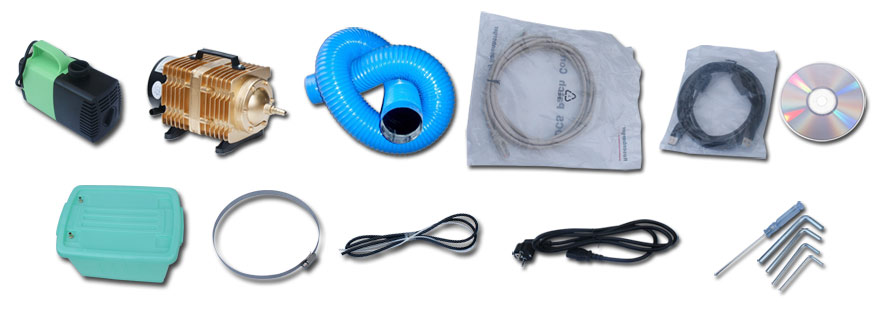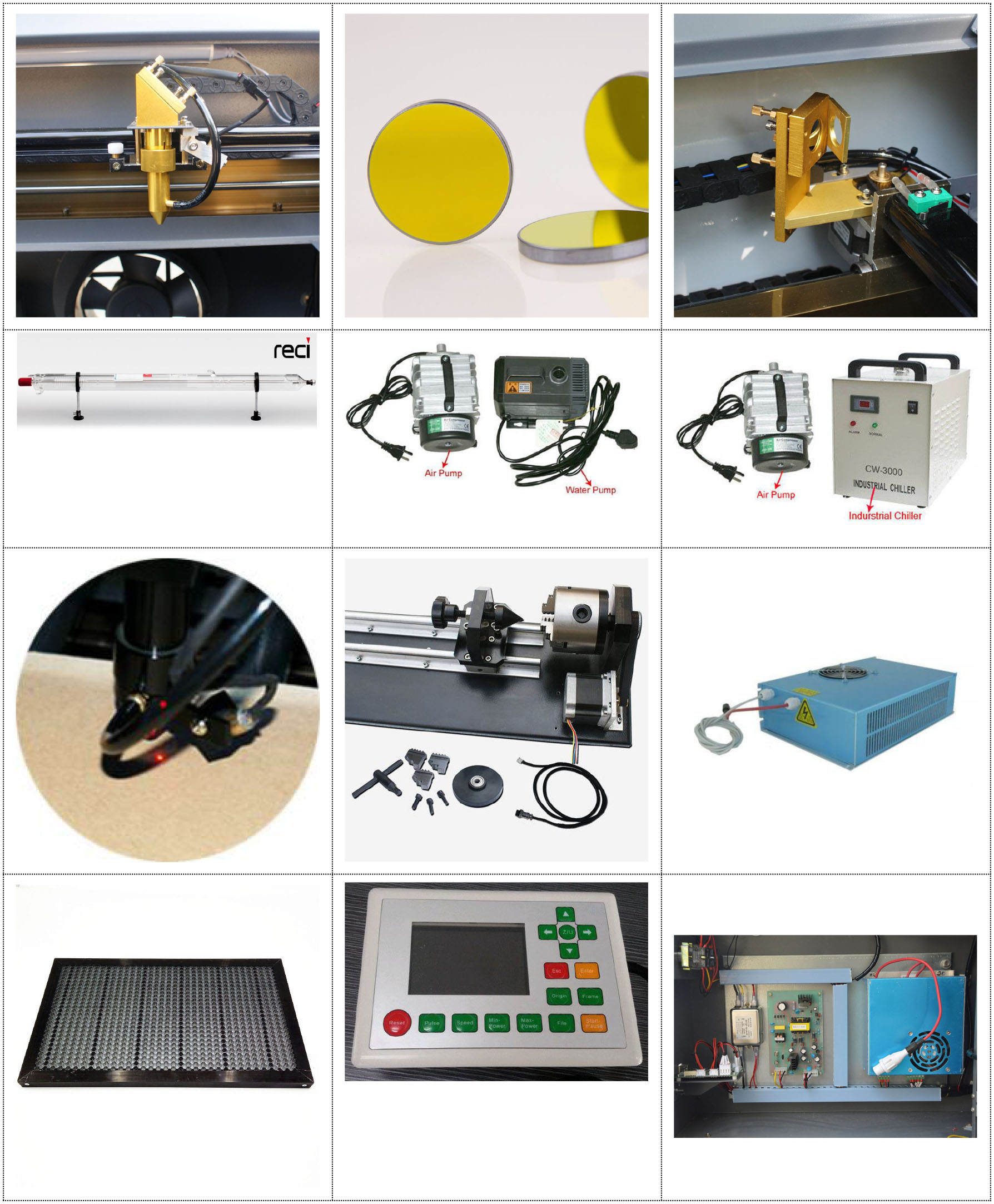What is crude protein? What is the difference between crude protein and protein? How do you measure the content of crude protein in feed? The high content of crude protein does not necessarily mean that the protein content is high. I think that when you look at this topic, you will surely think of some of these issues. Next, I will introduce the concept of crude protein, crude protein measurement and other questions about crude protein content in feed. Crude protein concept: Crude protein not only includes the substance of protein, it covers a wider range, including all substances containing nitrogen. Includes true protein and nitrogenous compounds (amides). The crude protein content of food was the highest in soybeans, followed by meat. Crude protein in English is crude protein. Crude protein is a measure of the content of a protein in foods and feeds. Since the nitrogen content in the general protein is about 16%, in the summary analysis, the Kjeldahl method is used to measure the total nitrogen amount and multiply it by a coefficient of 6.25. In fact, it is a general term for nitrogenous compounds in foods and feedstuffs. It includes both true and non-protein nitrogenous compounds, which may include free amino acids, purines, pyridine, urea, nitrates, and ammonia. In addition, different proteins have different amino acid composition, and their nitrogen content is different. The coefficient of conversion of total nitrogen into protein is also different. For example, the conversion coefficient of wheat and most grains is 5.80, rice 5.95, soybean 5.7, most of edible beans and nuts 5.3, milk 6.38 and so on. Crude protein is only a rough idea. Crude protein content: Below I introduce the crude protein content of several common substances for your reference only. Coix seed crude protein content: 13%-14% Cotton bran Crude protein content: up to 40% Nongda Baizao Maize Crude protein content: 3.41% Minyu 168 crude protein content: 9.63% Taiwan Daqing Date Crude protein content: 0.86% The crude protein content of several agricultural products or fruits was described above. If more information is needed, you can consult it yourself. Crude protein determination: Method One: The easiest and fastest method is to use a protein analyzer (see). This standard refers to the use of ISO 5983-1979 "animal feed - the determination of nitrogen content and crude protein content calculation." 1 Topic content and scope of application This standard specifies the method for the determination of crude protein content in feeds. This standard applies to compound feed, concentrated feed and single feed. 2 Reference standards GB 601 Chemical reagent titration analysis (capacity analysis) preparation of standard solution 3 Principle The Kjeldahl method determines the amount of nitrogen in the sample, that is, the organic matter is destroyed with sulfuric acid under the action of the catalyst, so that the nitrogen-containing material is converted into ammonium sulfate. A strong alkali was added for distillation to allow ammonia to escape. After being absorbed by boric acid, the acid content was titrated with acid to determine the nitrogen content. The result was multiplied by a conversion factor of 6.25 to calculate the crude protein content. 4 Reagents 4.1 Sulfuric acid (GB 625): chemically pure, 98% content, no nitrogen. 4.2 Mixed catalyst: 0.4g copper sulfate, 5 crystal waters (GB 665), 6g potassium sulfate (HG 3-920) or sodium sulfate (HG 3-908), all chemically pure, ground and mixed. 4.3 Sodium hydroxide (GB 629): Chemically pure, 40% aqueous solution (m/V). 4.4 Boric acid (GB 628): Chemically pure, 2% aqueous solution (m/V). 4.5 mixed indicator: Methyl red (HG 3-958) 0.1% ethanol solution, bromocresol green (HG 3-1220) 0.5% ethanol solution, the two solutions mixed in equal volumes, in the cool place for three months. 4.6 hydrochloric acid standard solution: potassium hydrogen phthalate calibration, according to GB 601 preparation. 4.6.1 hydrochloric acid standard solution: c (HCl) = 0.1mol/L. 8.3 mL of hydrochloric acid (GB 622, analytical grade) was injected into 1 000 mL of distilled water. 4.6.2 hydrochloric acid standard solution: c (HCl) = 0.02mol/L. 1.67 mL of hydrochloric acid (GB 622, analytical grade) was injected into 1 000 mL of distilled water. 4.7 Sucrose (HG 3-1001): analytically pure. 4.8 Ammonium sulfate (GB 1396): Analytical grade, dry. 4.9 boric acid absorption solution: 1% boric acid aqueous solution 1 000mL, add 0.1% bromocresol green ethanol solution 10mL, 0.1% methyl red ethanol solution 7mL, 4% sodium hydroxide aqueous solution 0.5mL, mix, set a cool place for a preservation period Month (for fully automatic programs). 5 Equipment 5.1 Laboratory crusher or mortar. 5.2 sample screen: aperture 0.45mm (40 mesh). 5.3 Analytical balance: Sensitivity 0.0001g. 5.4 cooking furnace or electric stove. 5.5 burette: acid, 10, 25 mL. 5.6 Kjeldahl flask: 250 mL. 5.7 Kjeldahl distillation apparatus: Constant direct distillation or semi-micro steam distillation. 5.8 Erlenmeyer flask: 150, 250 mL. 5.9 Volumetric flask: 100 mL. 5.10 cooking tube: 250mL. 5.11 Nitrogen determination instrument: Various types of semi-automatic, fully-automated protein analyzers manufactured in Kjeldahl's principle. 6 sample selection and preparation A representative sample was selected to be reduced to 200 g in quadruplicate, and after crushing, all passed through a 40-mesh sieve and placed in a sealed container to prevent changes in the composition of the sample. 7 Analysis steps 7.1 Arbitration Act 7.1.1 digestion of the sample Weigh the sample 0.5 ~ 1g (nitrogen content 5-80mg) accurate to 0.0002g, into the Kjeldahl flask (5.6), add 6.4g mixed catalyst (4.2), mixed with the sample, add 12mL of sulfuric acid ( 4.1) and 2 glass beads, the Kjeldahl flask (5.6) placed in the electric furnace (5.4) heating, start a small fire, to coke the sample, after the foam disappears, then strengthen the fire (360 ~ 410 °C) until the transparent blue Green, then continue heating for at least 2h. 7.1.2 Distillation of ammonia (see Annex A for the inspection of the distillation step) 7.1.2.1 Constant Distillation The sample cooking solution (7.1.1) was cooled, 60-100 mL of distilled water was added, shaken, and cooled. The end of the condenser tube of the distillation apparatus (5.7) was immersed in an Erlenmeyer flask containing 25 mL of boric acid (4.4) absorbent and 2 drops of mixing indicator (4.5). Then carefully add 50 mL of sodium hydroxide solution (4.3) to the Kjeldahl flask (5.6), shake gently the Kjeldahl flask (5.6), mix the solution, and heat and distill until the volume of the effluent is 100 mL. Lower the Erlenmeyer flask so that the end of the condenser tube exits the liquid surface and continue the distillation for 1 to 2 minutes. Rinse the condenser tube end with distilled water. The washing solution must flow into the Erlenmeyer flask and stop the distillation. 7.1.2.2 Semi-micro distillation The sample boiling liquid (7.1.1) cooling, adding 20mL of distilled water, transferred to a 100mL volumetric flask, after cooling, dilute to the mark with water, shake, as a sample decomposition solution. The end of the condenser tube of the semi-micro distillation device (5.7) was immersed in an Erlenmeyer flask (5.8) filled with 20 mL boric acid (4.4) absorbing solution and 2 drops of mixing indicator (4.5). A few drops of the methyl red indicator should be added to the water of the steam generator (5.7). Several drops of sulfuric acid should be kept during the distillation to make it orange-red. Otherwise, additional sulfuric acid must be added. Accurately transfer 10-20 mL of sample decomposing solution to the reaction chamber of the distillation device (5.7), rinse the sample inlet with a small amount of distilled water, stopper the inlet glass stopper, add 10 mL of sodium hydroxide solution (4.3), and carefully lift the glass stopper. Bring it into the reaction chamber, plug the glass stopper, and add water seal at the entrance to prevent air leakage. Distill 4min lower the conical flask (5.8) to make the end of the condenser tube away from the absorption liquid surface, and then distill for another 1min. Rinse the condenser tube end with distilled water. The wash solution will flow into the conical flask and stop the distillation. Note: The results of the 7.1.2.1 and 7.1.2.2 distillation methods are similar. 7.1.2.3 Inspection of distillation steps Accurately weigh 0.2g of ammonium sulfate (4.8) instead of the sample and perform the procedure according to 7.1.2 or 7.2.2. The measured ammonium content of ammonium sulfate is 21.19±0.2%. Otherwise, check the addition of alkali, distillation and titration. Steps are correct. 7.1.3 Titration Absorption solution after distillation with 7.1.2.1 or 7.1.2.2 is immediately titrated with 0.1 mol/L (4.6.1) or 0.02 mol/L (4.6.2) hydrochloric acid standard solution. The solution changes from blue-green to gray-red to end . 7.2 Recommended Practice 7.2.1 digestion of the sample Weigh 0.5 ~ 1g sample (nitrogen content 5 ~ 80mg) accurate to 0.0002g, into the digestive tube, add 2 pieces of digestion (instrument self-provided) Or 6.4 g of the mixed catalyst (4.2), 12 mL of sulfuric acid (4.1), was digested on a digestion oven at 420° C. for 1 h. Take out cool and add 30mL of distilled water. 7.2.2 Distillation of ammonia When automatic determination of nitrogen (5.11) is used, the determination is made according to the instrument's own constant program. When using a semi-automatic nitrogen analyzer (5.11), insert the tube with digestive liquid on the distillation apparatus, add 25 mL of boric acid (4.4) as the absorption solution, add 2 drops of the mixing indicator (4.5), and condensate tube of the distillation apparatus (5.7) The end is immersed in an Erlenmeyer flask containing the absorption solution, and then 50 mL of sodium hydroxide solution (4.3) is added to the digestion tube for distillation. The distillation time is suitable when the volume of the absorbing liquid reaches 100 mL. Lower the Erlenmeyer flask and rinse the end of the condenser tube with distilled water. The wash solution must flow into the Erlenmeyer flask. 7.2.3 Titration The absorption solution was titrated with a 0.1 mol/L standard hydrochloric acid solution (4.6.1) and the solution was changed from blue-green to grayish red as the end point. 8 blank determination Weigh sucrose 0.5g, instead of the sample, according to Chapter 7 blank measurement, the volume of consumption of 0.1mol/L hydrochloric acid standard solution (4.6.1) shall not exceed 0.2mL. The volume of 0.02 mol/L hydrochloric acid standard solution (4.6.2) shall not exceed 0.3 mL. 9 Expression of analysis results 9.1 Calculations are as follows: Crude protein (%)=(V2-V1)・c×0.0140×6.25/(m×V'/V) ×100 In the formula: V2── The volume of the standard acid solution required for titrating the sample, mL; V1── The volume of standard acid solution required to titrate the blank, mL; C── concentration of hydrochloric acid standard solution, mol/L; M── sample weight, g; V── The total volume of sample decomposition liquid, mL; V── volume of sample decomposition liquid distillation, mL; 0.0140—The mass of nitrogen expressed in grams equivalent to 1.00 mL of hydrochloric acid standard solution [c(HCl)=1.000 mol/L]. 6.25 - The average coefficient of conversion of nitrogen into protein. 9.2 Repeatability Two parallel samples were taken for each sample and the arithmetic average was used as the result. When the crude protein content is more than 25%, the allowable relative deviation is 1%. When the crude protein content is between 10% and 25%, the allowable relative deviation is 2%. When the crude protein content is below 10%, the relative deviation allowed is 3%. Kjeldahl Overview of the UTECH CO2 Laser Engraver
UTECH Laser Engraver is the ideal Laser Engraving Machine - no matter if you are starting your own business or want to speed up current production, laser engraving wood, plastic, acrylic, fabrics and many other material has never been more efficient. This CO2 laser engraver has the highest quality components which ensures minimal maintenance requirements.
Features:
Technical parameters:
We also provide other laser machine with different working area and different function,
Laser Engraving Machine Laser Engraving Machine,Cnc Metal Engraving Machine,Mini Laser Engraving Machine,Cnc Laser Engraving Machine Shandong U-May CNC Technology Co., Ltd. , https://www.sesamecnc.com



There must be a right machine for you:
Laser cutting and engraving machine: UT-4030, UT-6040, UT-9060, UT-1060, UT-1290, UT-1390, UT-1490, UT-1610, UT-1325, etc.
We've professional design team, any size and appearance is suitable for you, we'll can customized for you.
Crude protein measurement method